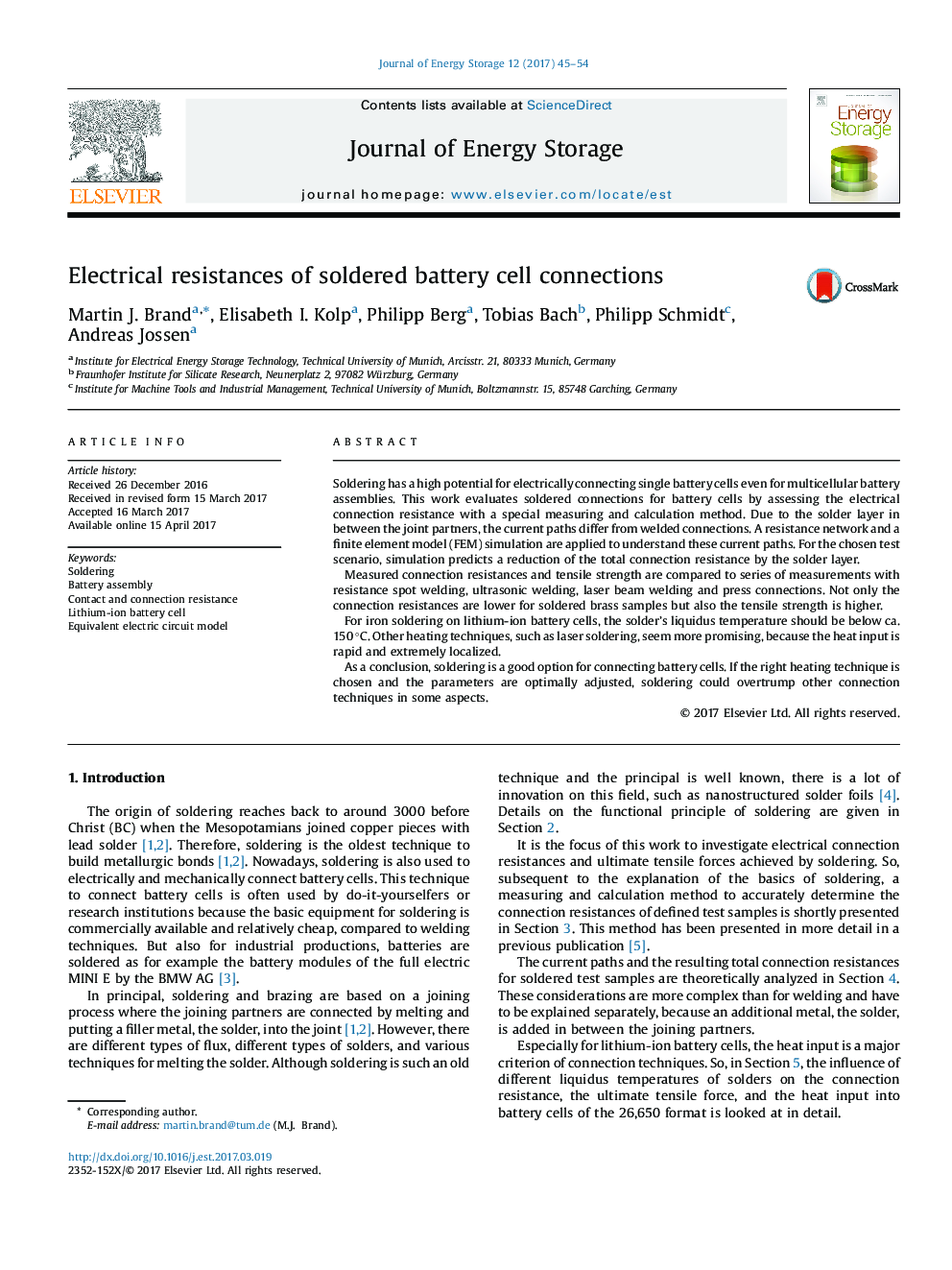| Article ID | Journal | Published Year | Pages | File Type |
|---|---|---|---|---|
| 5127286 | Journal of Energy Storage | 2017 | 10 Pages |
â¢We investigated the suitability and influences of soldering to connect batteries.â¢Current paths through solder layers are described analytically and by simulation.â¢Influences of material conductivity and solder's liquidus temperature are analyzed.â¢Heat input into battery cells is compared to ultrasonic, spot and laser welding.â¢Soldered connections show high tensile strength and low connection resistances.
Soldering has a high potential for electrically connecting single battery cells even for multicellular battery assemblies. This work evaluates soldered connections for battery cells by assessing the electrical connection resistance with a special measuring and calculation method. Due to the solder layer in between the joint partners, the current paths differ from welded connections. A resistance network and a finite element model (FEM) simulation are applied to understand these current paths. For the chosen test scenario, simulation predicts a reduction of the total connection resistance by the solder layer.Measured connection resistances and tensile strength are compared to series of measurements with resistance spot welding, ultrasonic welding, laser beam welding and press connections. Not only the connection resistances are lower for soldered brass samples but also the tensile strength is higher.For iron soldering on lithium-ion battery cells, the solder's liquidus temperature should be below ca. 150 °C. Other heating techniques, such as laser soldering, seem more promising, because the heat input is rapid and extremely localized.As a conclusion, soldering is a good option for connecting battery cells. If the right heating technique is chosen and the parameters are optimally adjusted, soldering could overtrump other connection techniques in some aspects.
